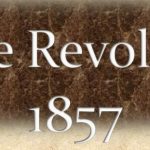The impact of modern Western culture and the realisation of defeat by foreign powers sparked a new awakening in India. Thoughtful Indians began to analyse the strengths and weaknesses of their society and sought ways to reform it. At the forefront of this intellectual and social movement was Raja Ram Mohan Roy, regarded as the first leader of modern India. He dedicated his life to the social, religious, intellectual, and political regeneration of Indian society.
Early Life and Education
-
Born: 1772, Radhanagar, Hooghly (West Bengal)
-
A true polymath, Roy was fluent in Sanskrit, Persian, Arabic, English, French, Latin, Greek, and Hebrew.
Social Reform and Atmiya Sabha
-
Settled in Calcutta in 1814, where he formed the Atmiya Sabha, which marked the beginning of his struggle against social and religious evils like idol worship, caste discrimination, and Sati.
Notable Writings and Publications
-
Gift to Monotheists (1809, in Persian): Argued for monotheism and criticised polytheism.
-
Precepts of Jesus (1820): Highlighted the moral and philosophical teachings of the New Testament.
-
Sambad Kaumudi (1821): A Bengali newspaper advocating freedom of the press, separation of powers, and Indian representation in government.
-
Mirat-ul-Akbar (1822): A Persian-language magazine promoting social reform and enlightenment.
Hindu College (Now Presidency University)
-
Co-founded Hindu College in 1817 (renamed Presidency College in 1855).
-
One of the earliest institutions promoting modern scientific and rational education in India.
Brahmo Samaj and Religious Reform
-
Founded Brahmo Samaj in 1828, a reformist religious movement within Hinduism.
-
Key Beliefs:
-
Monotheism
-
Rejection of idol worship and caste system
-
Denial of Vedic authority, karma, and rebirth
-
Adoption of rational, ethical practices inspired by Christianity and Islam
-
-
Led to abolition of Sati (1829) under Lord William Bentinck, a major milestone in Indian reform.
Legacy and Death
-
1830: Traveled to England as Mughal ambassador to defend the ban on Sati.
-
Honored with the title “Raja” by Mughal Emperor Akbar II.
-
Died in 1833 in Bristol, England, due to meningitis.
Modern Recognition
-
In 2016, S. Nihal Singh received the Raja Ram Mohan Roy Award for contributions to journalism.
-
Presidency University celebrated 200 years in recognition of its foundation by Roy and David Hare.
🧠 Why He Matters Today
Raja Ram Mohan Roy laid the foundation for modern Indian thought, promoting liberalism, rationalism, and equality. His vision continues to inspire movements for education, gender justice, and secularism in India.


Pingback: Partition Horrors Remembrance Day: History & Lessons